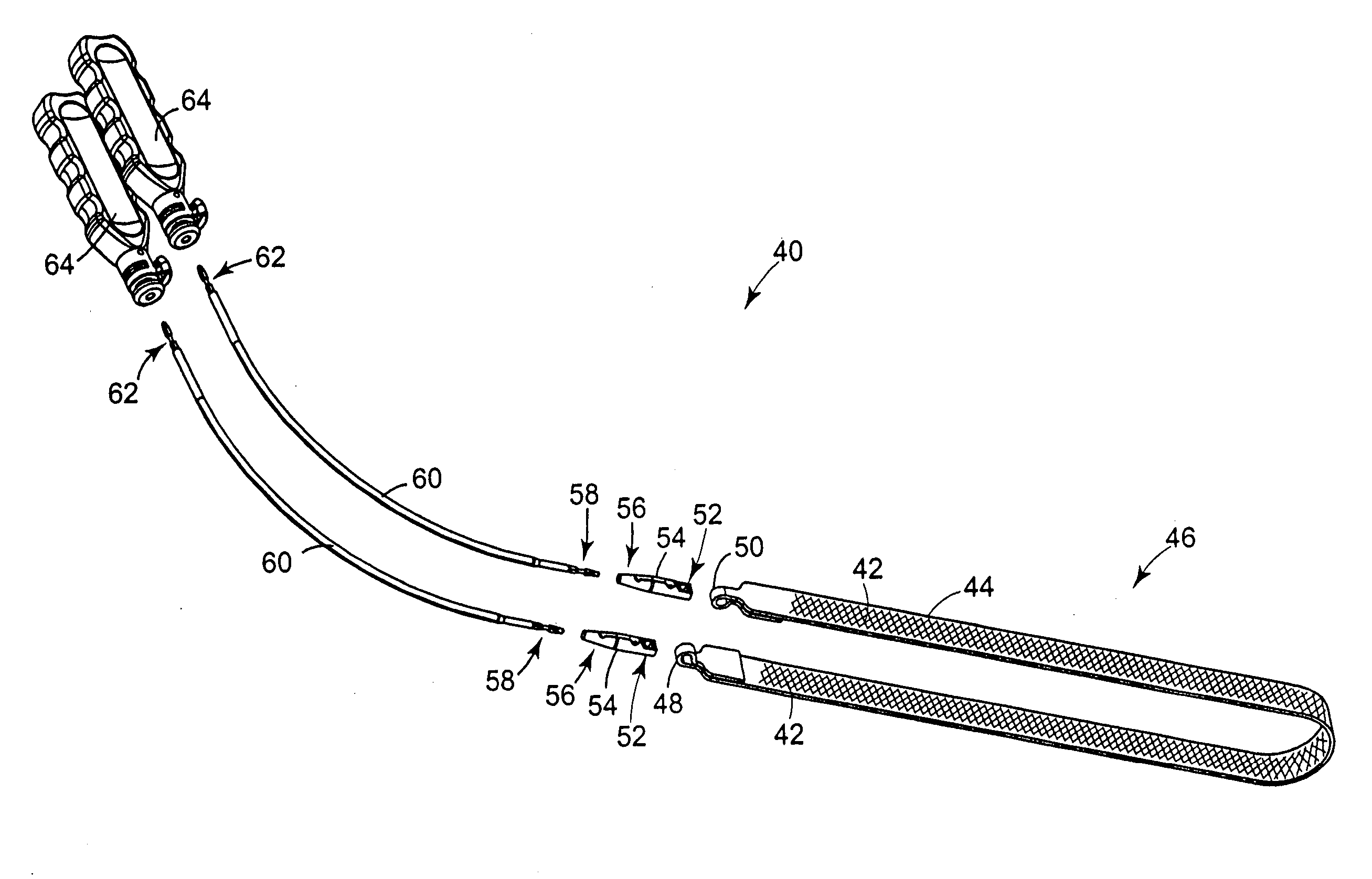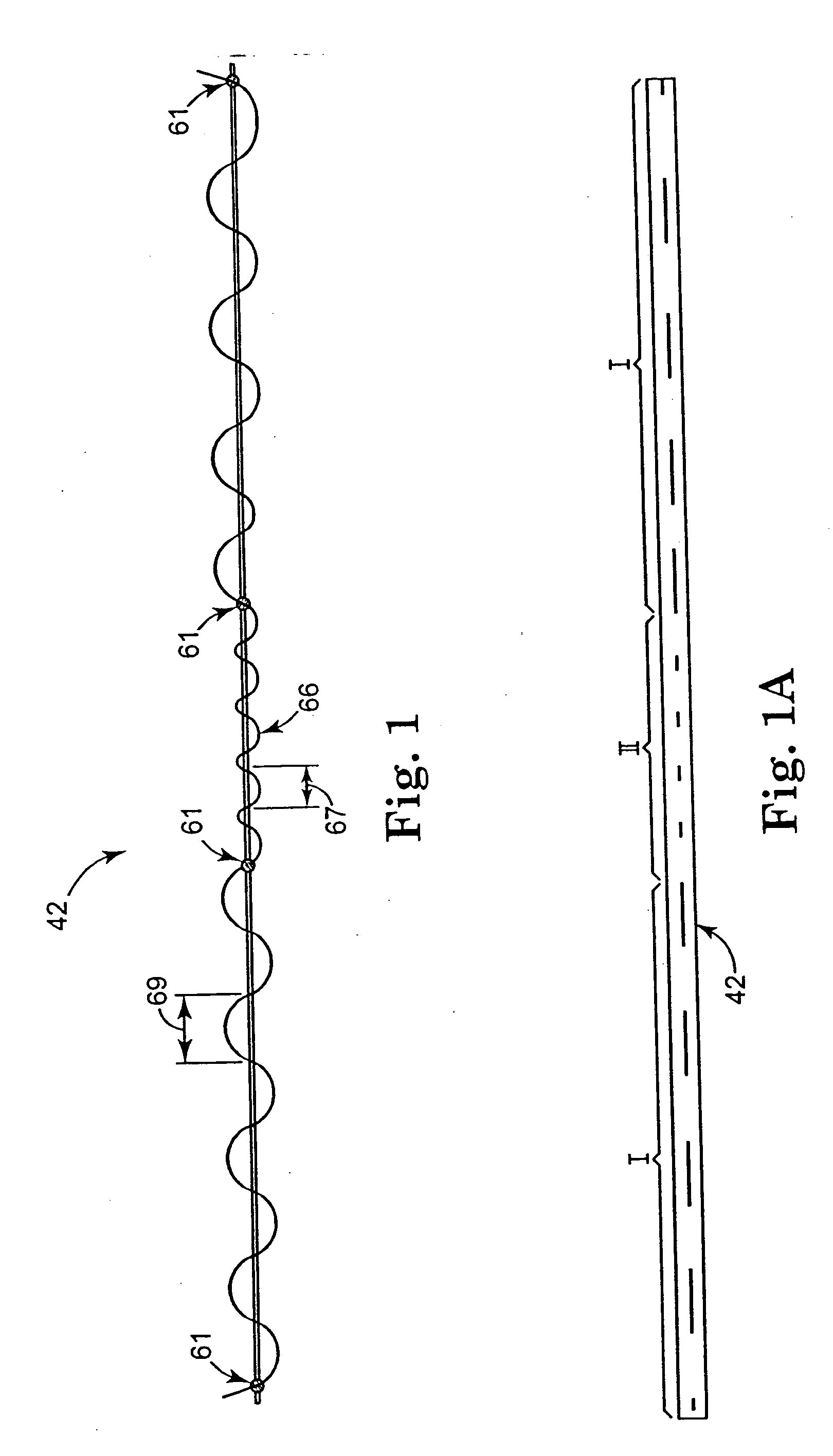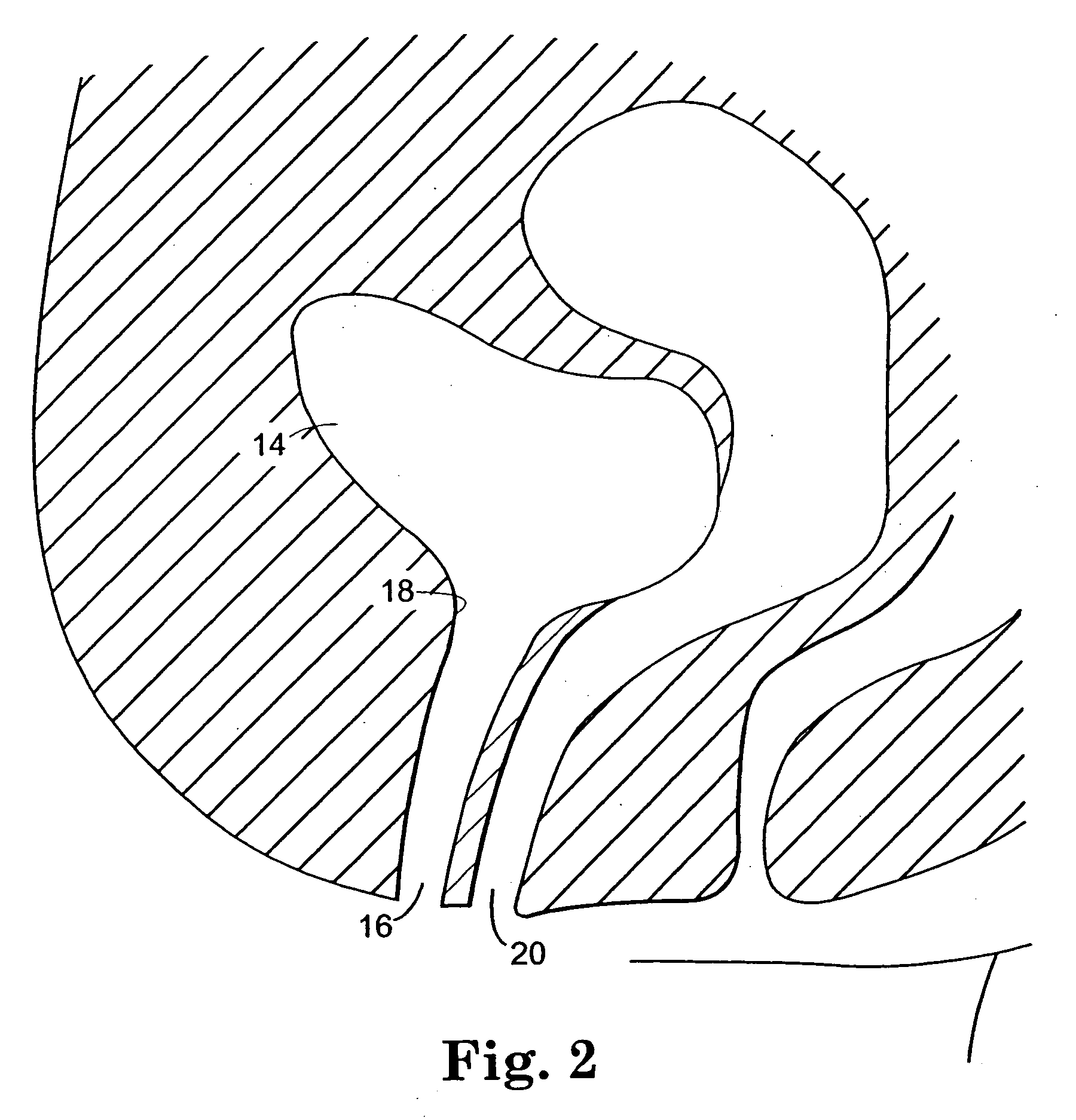Sling delivery system and method of use
a delivery system and sling technology, applied in the field of sling delivery system and method of use, can solve the problems of incontinence type, functional incontinence, and difficulty in moving from one place to another
- Summary
- Abstract
- Description
- Claims
- Application Information
AI Technical Summary
Benefits of technology
Problems solved by technology
Method used
Image
Examples
Embodiment Construction
[0112] The following description is meant to be illustrative only and not limiting. Other embodiments of this invention will be apparent to those of ordinary skill in the art in view of this description.
[0113] Referring to FIG. 4, an embodiment of assembly 40 in accordance with the present invention includes a sling assembly 46 that includes a sling 42 for treating incontinence. The present invention is particularly suitable for treating stress urinary incontinence (SUI) diagnosed with urethral hypermobility or intrinsic sphincter deficiency in both men and women. Although the invention as disclosed herein generally refers to SUI, treatment of other urological disorders, such as urge incontinence, mixed incontinence, overflow incontinence, functional incontinence, prolapse (e.g. vaginal), enteroceles (e.g. of the uterus), rectoceles and other non-urological disorders, are also included within the scope of the present invention. It is contemplated that the present invention may also...
PUM
 Login to View More
Login to View More Abstract
Description
Claims
Application Information
 Login to View More
Login to View More - R&D
- Intellectual Property
- Life Sciences
- Materials
- Tech Scout
- Unparalleled Data Quality
- Higher Quality Content
- 60% Fewer Hallucinations
Browse by: Latest US Patents, China's latest patents, Technical Efficacy Thesaurus, Application Domain, Technology Topic, Popular Technical Reports.
© 2025 PatSnap. All rights reserved.Legal|Privacy policy|Modern Slavery Act Transparency Statement|Sitemap|About US| Contact US: help@patsnap.com



